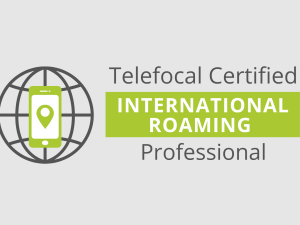SS7 and SIGTRAN Workshop

Course Overview
The Signaling System No.7, widely known as SS7, provides the foundation for signaling procedures in Telecommunication Networks. Originally developed to manage voice calls in fixed-line telephone networks it rapidly expanded into supporting service add-on’s, such as Call Hold, Call Waiting, Number Presentation services and many more.
Soon, Mobile Networks adopted SS7 not only for its versatility and modular design, but also to provide full compatibility with fixed-line network services.
Entering into the era of IP networks required the transport of SS7 signaling messages over IP networks. Signaling Transport (Sigtran) addresses this transition by providing new concepts, functions and adaptation.
Target Audience
Telecommunication and Mobile Operators technical staff, support engineers, software developers and professionals who are interested in signaling procedures and application.
This course will also benefit those in the wider technical community who are required to understand SS7 / Sigtran protocols, their features and capabilities.
Duration & Training Format
- Classroom: 4 days
- LIVE Virtual: 28 hours
- A minimum of 8 or more participants is required for a Classroom session to commence.
- A minimum of 6 or more participants is required for a LIVE Virtual session to commence.
- LIVE Virtual courses can be conducted for 5 hours or 7 hours daily. Please note that the number of training days will be extended if you opt for 5 hours daily.
Upcoming Course Dates
Course Objectives
This training will provide participants with a strong foundation in both SS7 and Sigtran.
- Starting with signaling principles, we will take a closer look at the foundation of modern signaling systems and their functional definition with the help of the OSI model.
- Participants will learn the functions and architecture of each protocol.
- With the help of the relevant ITU-T technical specification papers, participants will apply the knowledge for a basic protocol analysis, using signaling procedure samples collected from live networks.
- A variety of examples and message samples will be illustrated to drive home important concepts and enhance the training experience.
Course Outline
- Introduction – Telecommunications Network Architecture
- The History of Signaling
- The ISO / OSI Model and its Application to Signaling
- SS7 Signaling Protocol – Requirements, Architecture and Functions
- The MTP – Message Transfer Part
- MTP Layer 1 – Functions and Application
- MTP Layer 2 – Functions and Application
- MTP Layer 3 – Functions and Application
- Signaling Message Format in MTP
- SCCP – Signaling Connection Control Part
- Architecture, Functions and Application
- Global Title Routing vs. Direct Address
- SCCP Connectionless Network Services (CLNS)
- SCCP Connection-Oriented Network Services (CONS)
- SCCP Signaling Message Format and Practical Analysis
- TCAP – Transaction Capabilities Application Part
- Architecture, Functions and Application
- Transaction Portion, Dialogue Portion and Component Portion in TCAP
- TCAP Message Format and Practical Analysis
- Network Specific Signaling Protocols
- ISUP (ISDN User Part) and BICC (Bearer-Independent Call Control)
- ISUP and BICC Architecture, Functions and Application
- Differences between ISUP and BICC
- Signaling Message Formats and Practical Analysis
- MAP (Mobile Application Part) for GSM and UMTS Networks
- 3GPP Specific Signaling Functions for Mobile Networks
- Architecture, Functions and Application
- MAP Message Format and Practical Analysis
- Customized Applications for Mobile Network Enhanced Logic (CAMEL)
- CAMEL Protocol Architecture and Functions
- CAMEL Protocol Usage and Service Examples
- CAMEL Functions and Message Formats
- CAMEL Procedures Practical Analysis
- SS7 Signaling over IP Networks – Sigtran
- Sigtran Protocol Requirements, Architecture, Implementation
- Security Consideration
- Sigtran and the OSI Model
- Steam Control Transport Protocol (SCTP)
- Architecture, Functions and Application
- Comparing TCP – UDP – SCTP
- SCTP Message Format
- Practical Analysis of SCTP Basic Functions
- Sigtran User Adaptation (UA) Layers
- M2UA/PA, M3UA, SUA and IUA
- Role, Functions and Application
- Mapping of SS7 MTP functions to UA’s
- Case Study 1: ISUP signaling over Sigtran (ISUP over M3UA)
- Case Study 2: BICC Signaling over Sigtran (BICC over M3UA)
Note: A Certificate of Completion will only be issued upon achieving at least 75% attendance for the course.
Pre-requisites
- A basic understanding of Telecommunication and Mobile Networks.
- Knowledge about network elements and their respective functions would be an advantage as would be basic understanding of IP-network concepts.


